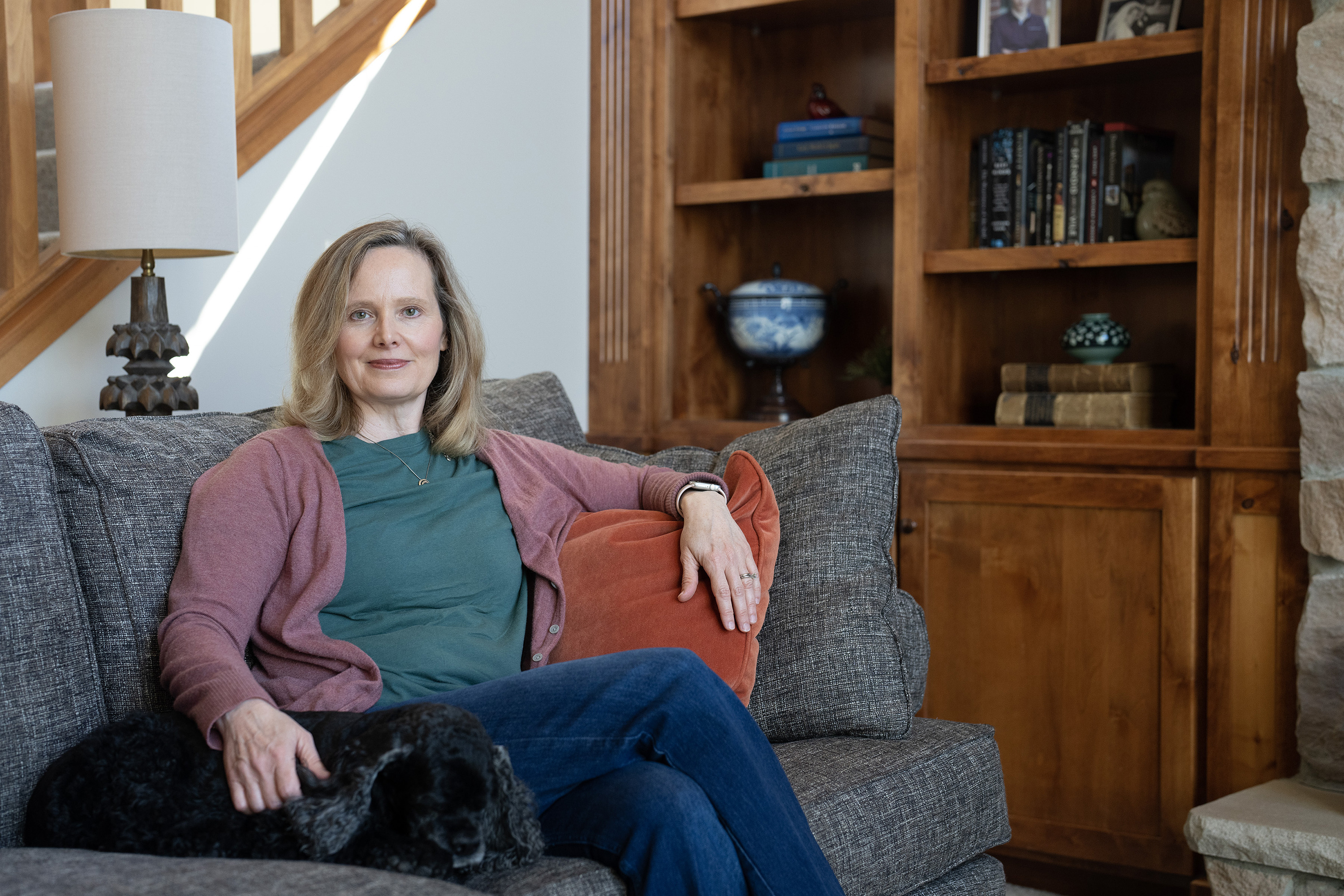Can Minnesota Reverse the Exodus of Burned-Out Doctors?
MINNEAPOLIS — Therapy, a whitewater rafting trip in Utah, and even a three-month break to tidy her garage and tackle household tasks failed to help Dr. Sarah Freitas rediscover her enthusiasm for her job.
The obstetrician would return to practice in Waconia, Minnesota, and feel tired every time she haggled on the phone with an insurance company or labored with the electronic medical record system that was supposed to make work better.
“I was always stuck in this rut where I felt exhausted and constantly irritated by everything silly that happened throughout my day,” she explained.
In 2022, Freitas departed from her medical practice after dedicating 19 years to it, retiring prematurely at the age of 50. This situation isn’t uncommon as burnout among numerous physicians in Minnesota is prompting them to leave their careers sooner than anticipated. This trend occurs precisely when an increasingly elderly populace will require greater attention from healthcare providers.
The problem is gaining attention, including from the Minnesota Legislature, which may spend $250,000 to connect stressed-out doctors to mental health support in an effort to preserve their careers.
Burnout can lead to undesirable consequences such as reduced quality of patient care and worse outcomes,” stated Dr. Colin West, who oversees staff wellbeing at the Mayo Clinic in Rochester. “To provide the highest standard of patient care, we must ensure that those caring for our patients receive excellent support.

Burnout has been recognized for two decades, but it erupted during the pandemic. Doctors felt purpose early on, when they raced to treat the first wave of COVID-19 patients, West said, but confronting so many deaths and patients who quarreled over COVID treatments and vaccines wore them down.
Due to necessity, doctors turned to online conferences and electronic messaging to monitor their patients throughout the pandemic. However, even after the public health crisis subsided, they found themselves feeling isolated and overwhelmed by an influx of email responses.
West and colleagues just
published survey results
showing 63% of doctors had burnout symptoms, such as emotional exhaustion and cynicism, at the pandemic’s peak in 2021. The rate declined to 42% in 2023, but was still higher than the burnout rate in most pre-pandemic years. And doctors reported more problems with work-life balance than other workers.
Nearly one in every five physicians intend to cease medical practice within the next five years, as reported.
workforce survey
as reported by the Minnesota Department of Health. The predominant cause was reaching retirement age; however, feeling burnt out came in as the second most frequent reason.
In 2002, Freitas finished medical school and underwent hands-on residency training in Indiana during a period when new physicians were often subjected to intense schedules. The following year, the Accreditation Council for Graduate Medical Education acknowledged the dangers associated with excessive resident working hours and subsequently limited their average workweek to 80 hours.
“We were trained to keep going until you can’t go anymore, and then keep going after that,” she said.
Freitas said her patients kept her energized. Getting a call that one of them was in labor was an adrenaline rush. She would hustle across the street from her clinic to Ridgeview Medical Center in Waconia for the delivery.
Joy faded, she said, as she encountered less face time with patients and more e-visits, insurance authorizations and paperwork. She didn’t sleep well, either, being trained to expect a call at any hour. Then her parents died, and she lamented that work prevented her from being available for them. She was missing moments in the lives of her three teenagers as well.
“Classic midlife things,” she said. Freitas announced that she was retiring in 2022, but stuck around for six months to say goodbye to patients and give her group practice time to replace her.
In theory, Minnesota doesn’t seem to be losing doctors; according to the state’s Board of Medical Practice, there were 29,000 licensed physicians as of last June, an increase from 22,000 a decade ago. However, these figures may not tell the whole story. For instance, Freitas maintained her license just in case she decides to come back.
Other doctors are reducing hours and seeing fewer patients. And the growth in licensed physicians is being outpaced by the growth in baby boomers who have reached their 60’s and 70’s and expect to need more medical care soon.
Already, doctors are seeing a “gray tsunami” of older patients from this massive generation with complex conditions that take longer to treat, said Dr. Natalia Dorf Biderman, who directs provider well-being for Bloomington-based HealthPartners. “The demand for care, it really is increasing significantly.”
Dorf Biderman and West are leading efforts by the Minnesota Medical Association, an advocacy group for physicians, to reduce burnout statewide. Their efforts prompted a recent state ban on hospitals asking about old, unrelated mental health issues before issuing credentials to doctors. Doctors are hesitant enough to seek care, West said, without fearing that it will make it harder to get licenses or credentials in the future.
The medical association also launched the
Treat Yourself First
campaign to encourage doctors to seek help. The proposed legislative funding would support this campaign.
Minneapolis-based Allina Health surveyed its doctors and found in 2022 that they linked their burnout to a loss of autonomy as they were required to respond to patient emails and conduct more electronic recordkeeping, all while maximizing patient visits.
Responses improved in 2024 after the health system made changes, said Dr. Mary Beth Lardizabal, medical director for Allina’s Center for Provider Well Being. Allina paid doctors to respond to patient messages while colleagues were on vacation, cutting down on paperwork when they returned.
Allina also is
using artificial intelligence
to summarize notes of patient visits, and providing doctors with peer support to talk about the hardships of their profession, along with therapeutic services.
“Its OK to not be OK,” Lardizabal said. “For a doctor, that is really, really hard, because you are supposed to be perfect. You’re supposed to never make a mistake.”
Dr. Laura Slings’ solution was to leave her Allina group practice and create True North,
a direct primary care practice
In White Bear Lake, patients cover annual costs at clinics without involving insurance. By making this switch, she exchanged one form of stress for another, assuming a financial gamble as she handled all tasks herself—from extracting blood samples to conducting tests and distributing medication—in her practice.
“My spouse sends all the orders via fax,” she mentioned.
However, she mentioned that having additional time for her patients has been energizing.
Burnout was a factor for over 500 physicians across 60 Allina health centers.
joining a union
In 2023, Dr. Matt Hoffman, who spearheaded the organizational drive, mentioned that a usual day at his Allina Vadnais Heights clinic could include seeing between 16 to 18 patients. After returning home for dinner, he would spend additional time into the evening handling paperwork and responding to patient emails.
“We’re trying to make sure that time is really paid for,” said Hoffman, who managed his own work stress by reducing visits by one to two patients per day and taking a lunch outside the clinic.
Freitas said she tried everything. But in the end, she had to retire from medicine.
Initially, the calm atmosphere at home felt unsettling, yet she adapted to it following numerous busy years. She enrolled in a dance course and also taught herself how to play the ukulele.
She mentioned that perhaps over time, she might revert to a profession that is “closely related to healthcare” or work part-time.
I had to take some time off,” she explained. “It felt like dying from a thousand small hurts.
©2025 The Minnesota Star Tribune. Visit at startribune.com. Distributed by Tribune Content Agency, LLC.




